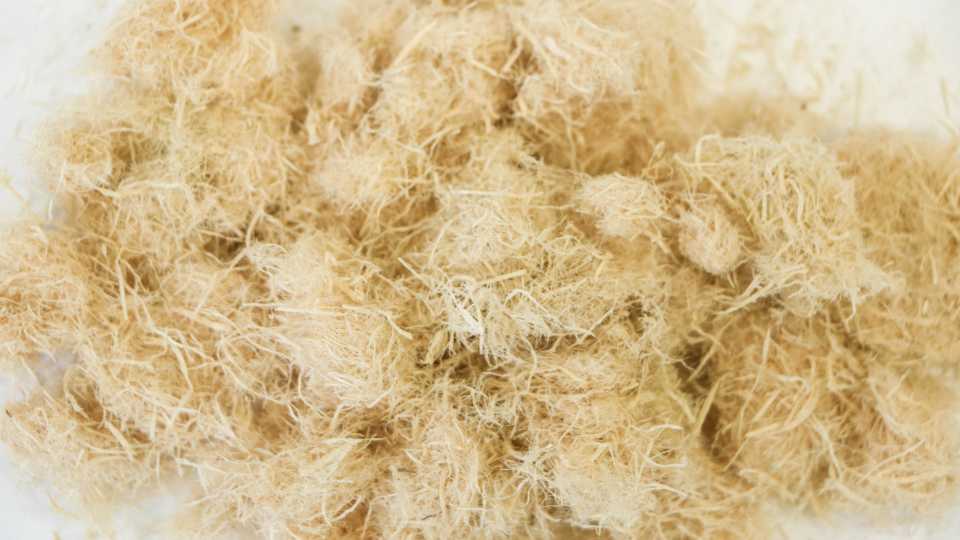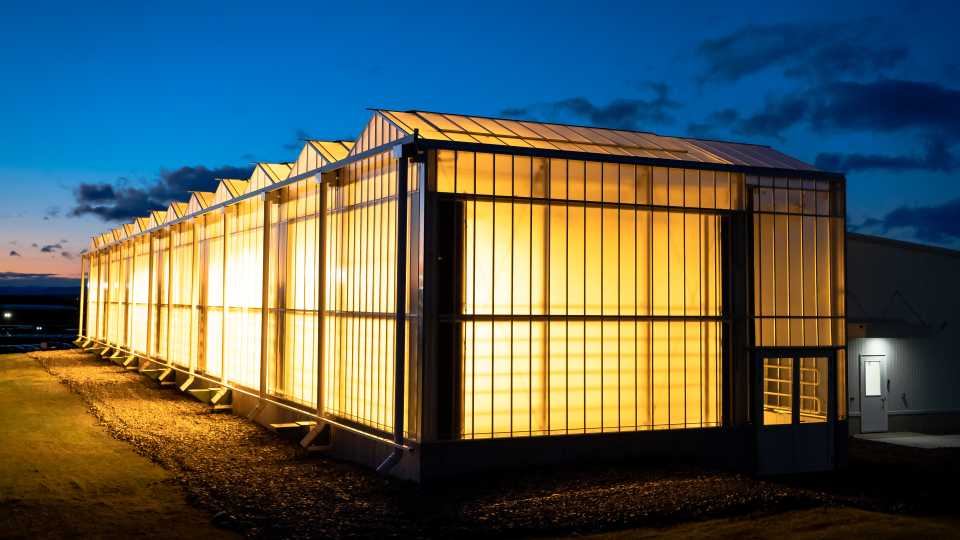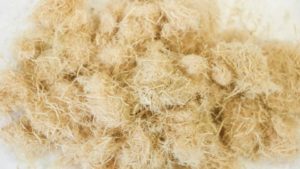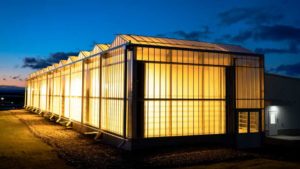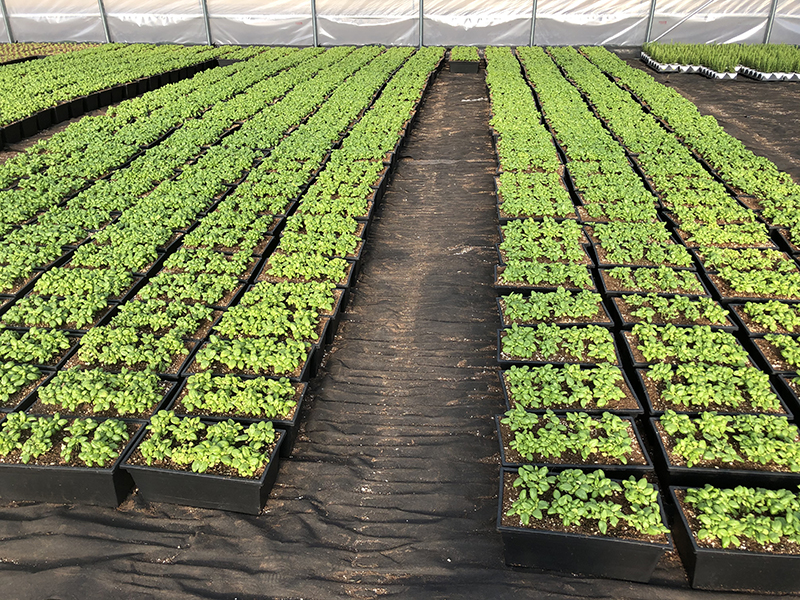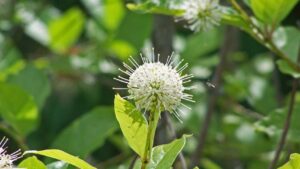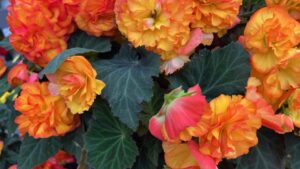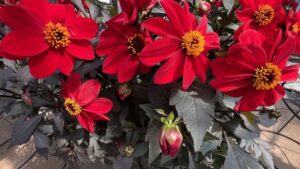Growing Media Advice for Perennials Production
With perennial production fast becoming a larger segment of the horticulture world, more growers, new and old, are entering this market.
From my experience as a past grower and now as a Grower Advisor for the Berger Technical Services team, I will share my thoughts and experiences on the subject of growing media for perennials.
What Purpose Does Growing Media Serve?
The first function of growing media is to provide support for the plant. In other words, it anchors the plant in place. It also needs to create an environment where roots can thrive. Growing media typically consists of a blend of ingredients with different physical and chemical characteristics. This combination of materials creates a structure designed to provide porosity (air space) as well as water and nutrient-holding capacity for plant root uptake.
To create the desired porosity and water retention for a given type of production, particle size is critical. Ingredients must be selected carefully and blended with the right ratio. As for the chemical properties such as the cation exchange capacity (CEC), electroconductivity (EC), and pH, they are determined by the combined effect of the individual components. To obtain predictable results and even growth, it is important to use a uniform substrate. The growing media should also be free of pests, pathogens, weeds, and other contaminants.
Which Aggregates Make Up a Good Perennial Mix?
When making up a growing media mix for perennial plants, consider these four components.
1. Horticultural-Grade Peat Moss: Provides water and nutrient-holding capacity, along with excellent air porosity and CEC.
2. Aged or Composted Pine Bark: Provides tremendous air space and porosity for drainage, while providing little CEC. The particle size should not be too large or too small. If too large, smaller components wash to the bottom of the container, creating an unbalanced structure. If too small, there is no particle size differentiation and thus no large pores, leading to loss of air space. Fresh bark should be avoided, but even with composted or aged bark, some nitrogen immobilization can be expected.
3. Horticultural Grade Perlite: Provides airspace and particle size differentiation, but little to no CEC or water-holding capacity. It is important to know that dusty and small perlite particles can clog up airspace and settle to the bottom of the mix profile, leading to root damage.
4. Natural Wood Fiber: Provides air space and water- and nutrient-holding capacity. This component is new to the perennial world. Berger has several customers trialing combinations of peat moss, composted/aged bark, and wood fiber with great results. Its presence seems to stimulate rapid root development.
There is no perfect universal perennial mix. You can, however, find the best growing media for your perennial program, although some trial and error may be required. To help you select the right one, several factors should be considered.
1. Climate Zone: Where are you located? How is your climate zone changing?
2. Local Weather Trends: Heat, cold, humidity, rain, snow, etc.
3. Seasonal Production Schedules: When do you start and finish production cycles?
4. Indoor vs. Outdoor Production: How much environmental control do you have?
5. Irrigation Method: Overhead, by hand, drip, etc.
6. Water Source and Availability: Are you limited by restrictions and/or quality?
7. Fertigation vs. Controlled Release or a combination of both
8. Container Size: Large or small?
9. Crop Requirements: Any crops with particular needs?
10. Starter Plant Size and Type: Bareroot, Ellepot, rooted cutting, plug, and the size of each compared to the container size.
What Should I Consider When Choosing a Mix?
If you choose a mix with high porosity, like an 80% to 95% bark mix (remaining percentage is peat moss), you give up water- and nutrient-holding capacity. This means you will have to use additional amounts of water to keep the plants turgid during hot dry periods, or you may start seeing severe root damage, excessive wilt, and crop loss. This can lead to nutritional, EC, and pH issues due to excess leaching. Conversely, during wet rainy periods, the mix will drain rapidly, helping avoid oversaturation and allowing air to return rapidly to the growing media for heathy roots. You may still see fertility issues due to the excessive leaching.
If you choose a mix with low porosity, you gain water- and nutrient-holding capacity along with higher CEC values. This will give you better control of nutrient levels and EC.
During dry spells, you will not have to irrigate as often, saving valuable time, water, and fertilizer. However, during wet spells, you run the risk of having a saturated media with low levels of oxygen leading to root issues and possible crop loss.
You must make a choice. Take all the criteria listed above and choose the mix that best suits your specific situation. For most climate zones, indoor and outdoor productions, irrigation methods, container sizes, and seasonal differences, the following mixes will give great results for perennial productions. A good soil manufacturer should provide a soil with a stable pH, a balanced fertilizer starter charge and a uniform particle size distribution. You can even ask to include a controlled-release fertilizer or beneficial microorganisms.
- 50% to 65% Horticultural Grade Peat, 25% to 35% Pine Bark, and 10% to 15% Horticultural Perlite
- 40% to 50% Horticultural Peat, 25% to 35% Pine Bark, 25% Natural Wood Fiber
Selecting a high-quality growing media may be a little bit more costly, but you will save down the road. It will help you avoid crop losses and get a premium price for your entire production. You may even be able to save some labor costs and shave off some production time.
A Word on Perennial Fertility
Perennials are not notoriously aggressive feeders. There are exceptions to every rule, so do a check on every variety you intend to grow and place them in your production facility according to fertilizer rates and EC requirements. No matter what crop you are growing, I suggest the following as far as fertility goes.
1. Have a complete water quality analysis done.
2. Ask your fertilizer manufacturer to suggest fertility type and rate, according to your crop, water analysis, and irrigation method.
This should help with pH drift, but I recommend in-house testing to monitor the pH and EC of the soil throughout the production cycle. If the salt content starts building up in the media, you will need to flush the containers before the roots are damaged.




